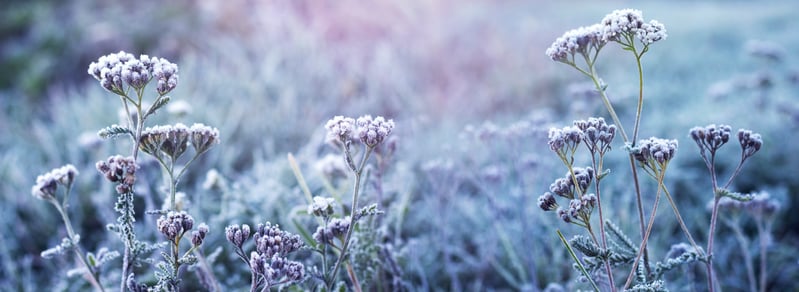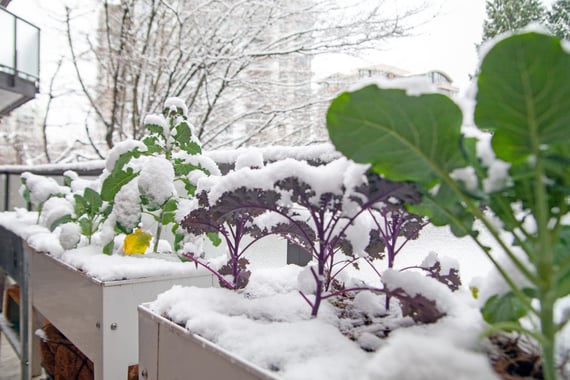Unveiling the Hidden World of Winter Gardening and Soil Microbes
As autumn blankets the garden in hues of red and gold, it's time to prepare your garden for the long winter's nap. Referred to as "tucking your garden in" or "putting your garden to bed," this essential process involves enriching your soil with compost, planting winter cover crops, and setting the stage for a lush spring garden. But what about the unseen residents of your soil—the microbes? Do they go dormant or continue to work their magic through the winter months? This blog will explore the intricate world of winter gardening, the secret life of soil microbes, and the science behind their seasonal rhythms.
Preparing Your Garden for Winter
You may be hesitant to spend time winterizing your garden beds after a long growing season. However, putting in the time and effort to prepare your soil for winter can improve your results in the spring. Surprisingly, soil microbes can overwinter and be ready to go at the first thaw. So, here are a few ways to entice the good microbes to stay in your garden.
1. Amend Your Soil with Compost: As winter approaches, enriching your garden soil with compost is like tucking it in with a warm blanket. This ensures a cozy winter haven for soil microbes, allowing them to continue their essential work. Compost adds organic matter, enriches the soil's nutrient content, and enhances water-holding capacity. Think of it as providing a hearty winter meal for these tiny garden workers.
2. Sow Winter Cover Crops: Winter cover crops are like nature's caretakers for your garden during the cold season. They not only protect your garden from the harsh elements but also provide essential nourishment for soil microbes. These cover crops hold the soil together, preventing erosion and keeping it healthy. Moreover, they create a cozy habitat for soil microbes, ensuring they have a thriving community to return to in spring.
3. Boosting Your Soil with Amendments: When boosting your garden's organic materials and compost, consider incorporating microbial products like SCD Bio Ag. Adding microbial helpers to compost ensures that beneficial organisms are dominant and that your compost begins to break down quickly and efficiently so that your bed is ready for planting in spring.
Seasonal Rhythms of Soil Microbes
Just like human beings, soil microbes follow seasonal rhythms, and understanding these dynamics is crucial for successful winter gardening. During winter, temperature plays a significant role in affecting microbial activity. Colder temperatures can slow their activities, while the presence of plants and cover crops can stimulate microbial growth.
And although it may be dark and cold, microbes are taking cues from their plant neighbors. The relationship between plants and soil microbes is truly remarkable. As plants grow, they nourish the surrounding microbial community by providing nutrients. In return, these microbes enhance nutrient uptake by the plants, creating a harmonious cycle. This symbiosis supports both plant health and microbial vitality, even during the winter months.
Temperature is another crucial factor affecting microbial communities in winter. When winter's chill sets in, it can inhibit microbial activity. However, the temperature fluctuations in winter can also impact microbial biomass and the release of carbon dioxide (CO2). Understanding these influences is essential for practical winter gardening.

Winter Microbial Activity
During winter, soil microbes display remarkable resilience in the face of cold temperatures. Their activity may slow down, but they don't go dormant. The microbial community adapts to chilly conditions and continues its essential work, ensuring your garden's soil remains healthy even in the cold.
In addition, the freeze-thaw cycle can influence microbial activity in regions with freezing winters. When soil freezes, it restricts oxygen diffusion, leading to anaerobic conditions. This alters the soil community structure, potentially affecting greenhouse gas production. As the soil thaws, oxygen returns, providing microbial communities with fresh nutrients and stimulating their activity.
Understanding how temperature fluctuations impact microbial respiration and the release of carbon dioxide is vital for winter garden care. As temperatures rise, microbial respiration increases, leading to the release of CO2. This dynamic relationship highlights the significance of comprehending seasonal soil microbial dynamics in your garden.

Tending to your garden's winter needs is about providing warmth, protection and food to your plants and nourishing the hidden heroes of the soil—the microbes. As winter settles in and your garden slumbers under its snowy blanket, these tiny life forms continue to play their part, even in the cold. By understanding the seasonal rhythms of soil microbes and how a soil amendment like SCD Bio Ag can help, you can make informed choices about caring for your garden and ensuring it awakens to a lively and flourishing spring.







